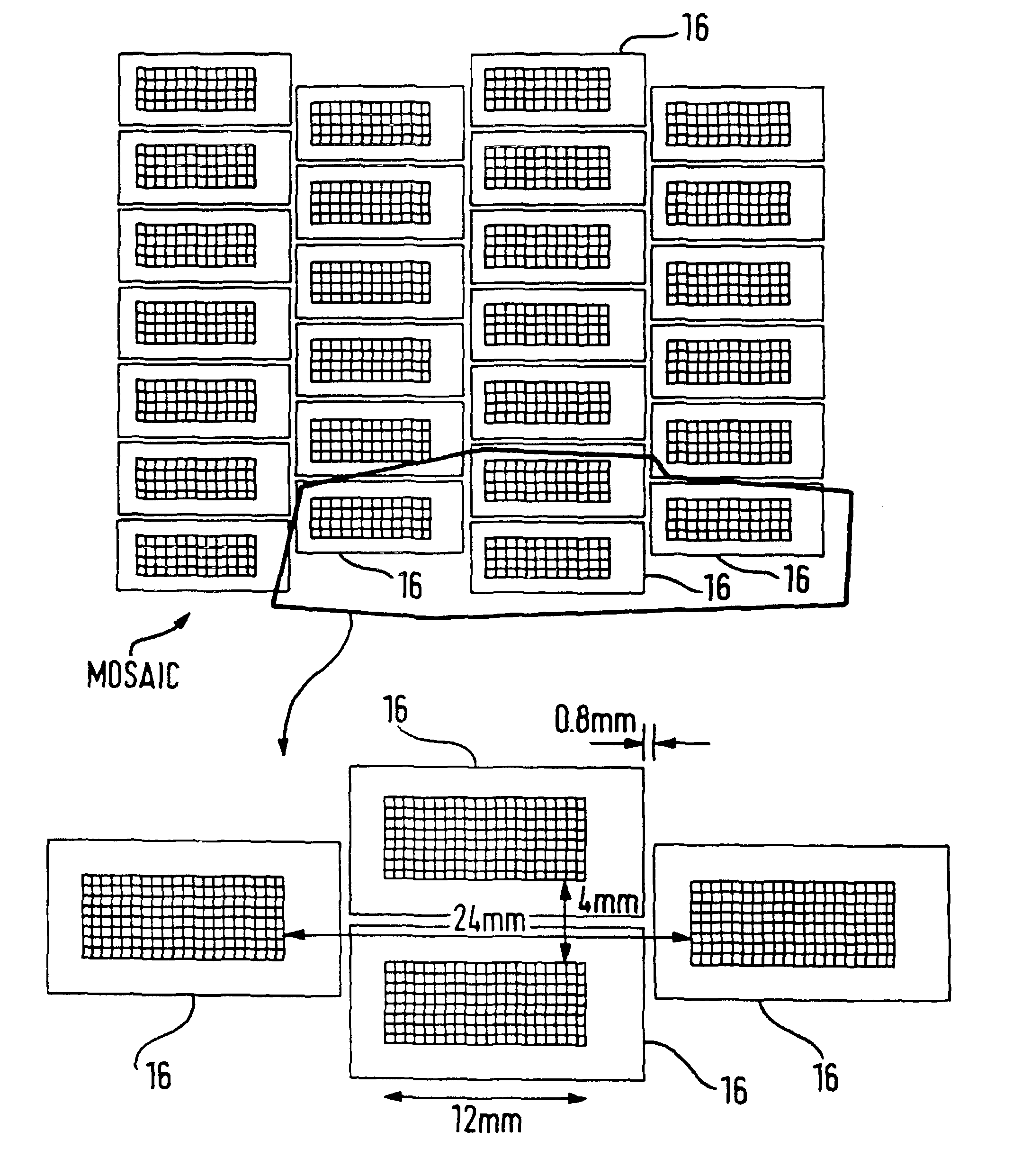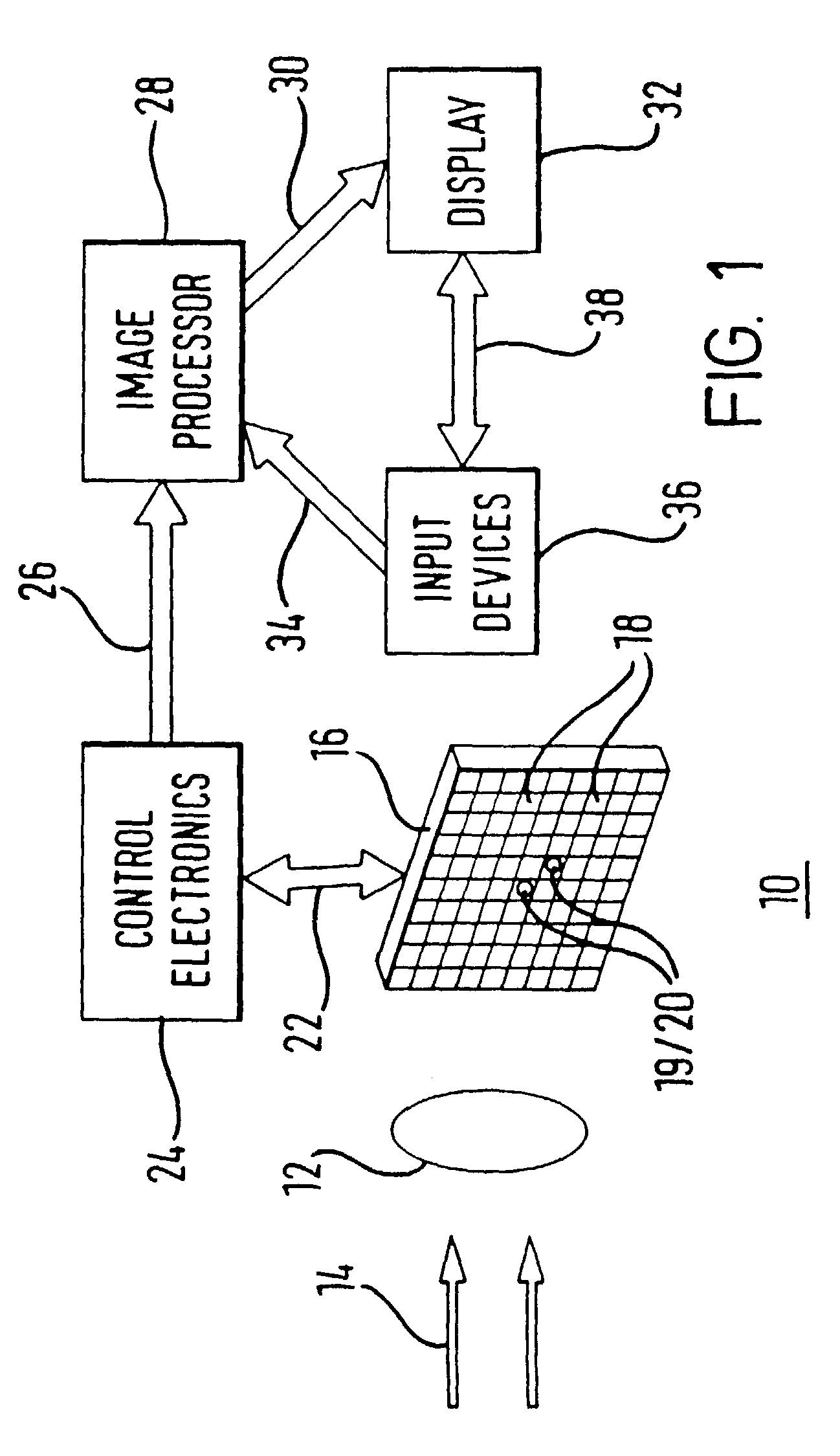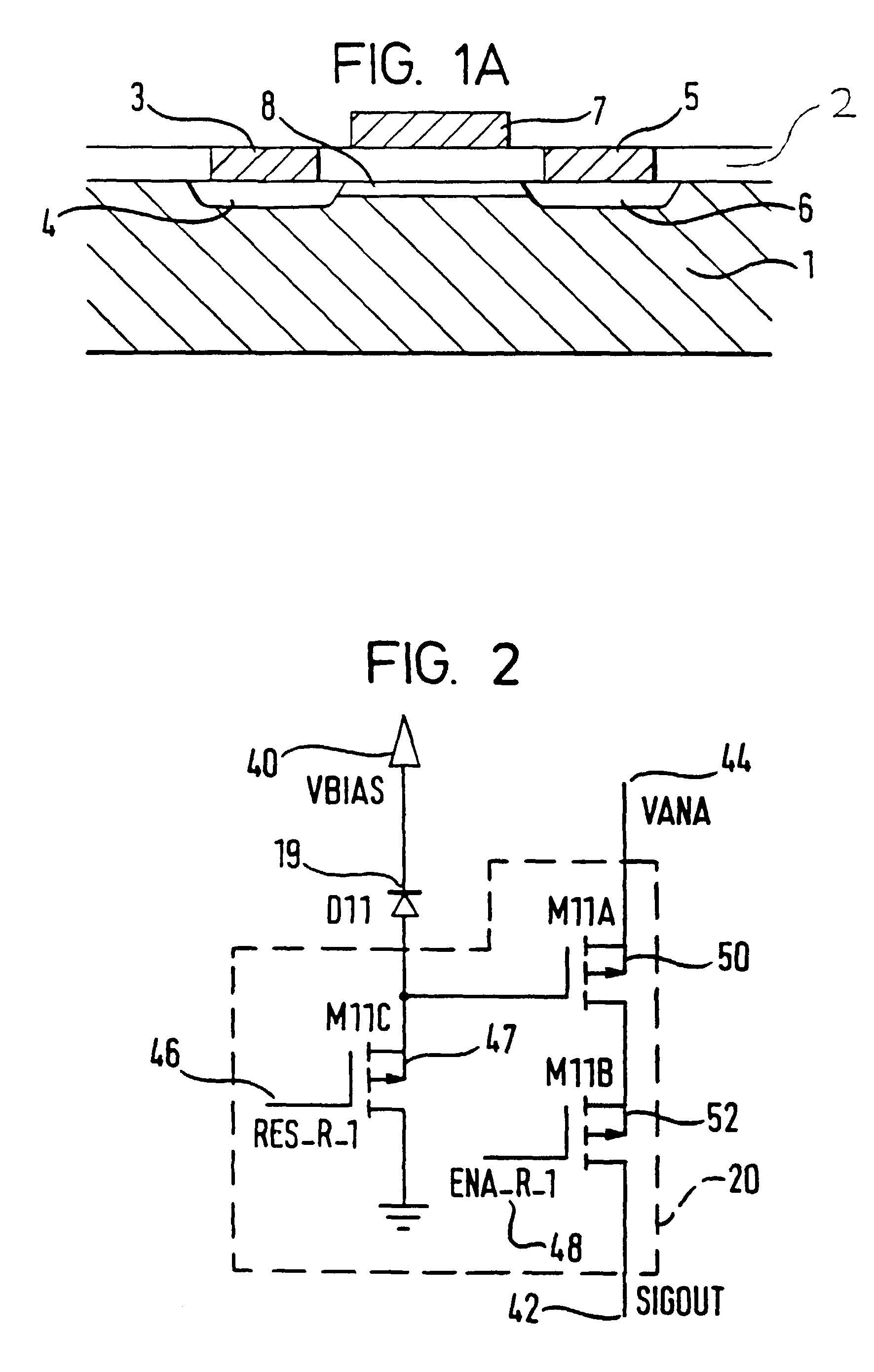Imaging devices, systems and methods
a technology of imaging devices and systems, applied in the field of imaging devices, systems and methods, can solve the problems of spoiling image resolution and contrast, ccds have an additional limitation of low efficiency, and light diffusion worsens resolution and contras
- Summary
- Abstract
- Description
- Claims
- Application Information
AI Technical Summary
Benefits of technology
Problems solved by technology
Method used
Image
Examples
Embodiment Construction
[0100]FIG. 1 is a schematic representation of an example of an application for an imaging system 10 including an embodiment of an imaging device in accordance with the invention.
[0101]This application relates to radiation imaging of an object 12 subjected to radiation 14. The radiation may, for example, be X-ray radiation and the object 12 may, for example, be a part of a human body.
[0102]The imaging device comprises an Active-pixel Semiconductor Imaging Device (ASID) 16 comprising a plurality of pixel cells 18. The imaging device detects directly high energy incident radiation such as X-rays, γ-rays, β-rays or α-rays and accumulates at each pixel cell, by means of a randomly accessible, active, dynamic pixel circuit on or adjacent to a corresponding pixel cell detector, values representative of the radiation incident at that pixel cell.
[0103]The ASID can be configured as a single semiconductor substrate (e.g., silicon) with each pixel cell comprising a pixel detector 19 and an acti...
PUM
 Login to View More
Login to View More Abstract
Description
Claims
Application Information
 Login to View More
Login to View More - R&D
- Intellectual Property
- Life Sciences
- Materials
- Tech Scout
- Unparalleled Data Quality
- Higher Quality Content
- 60% Fewer Hallucinations
Browse by: Latest US Patents, China's latest patents, Technical Efficacy Thesaurus, Application Domain, Technology Topic, Popular Technical Reports.
© 2025 PatSnap. All rights reserved.Legal|Privacy policy|Modern Slavery Act Transparency Statement|Sitemap|About US| Contact US: help@patsnap.com



